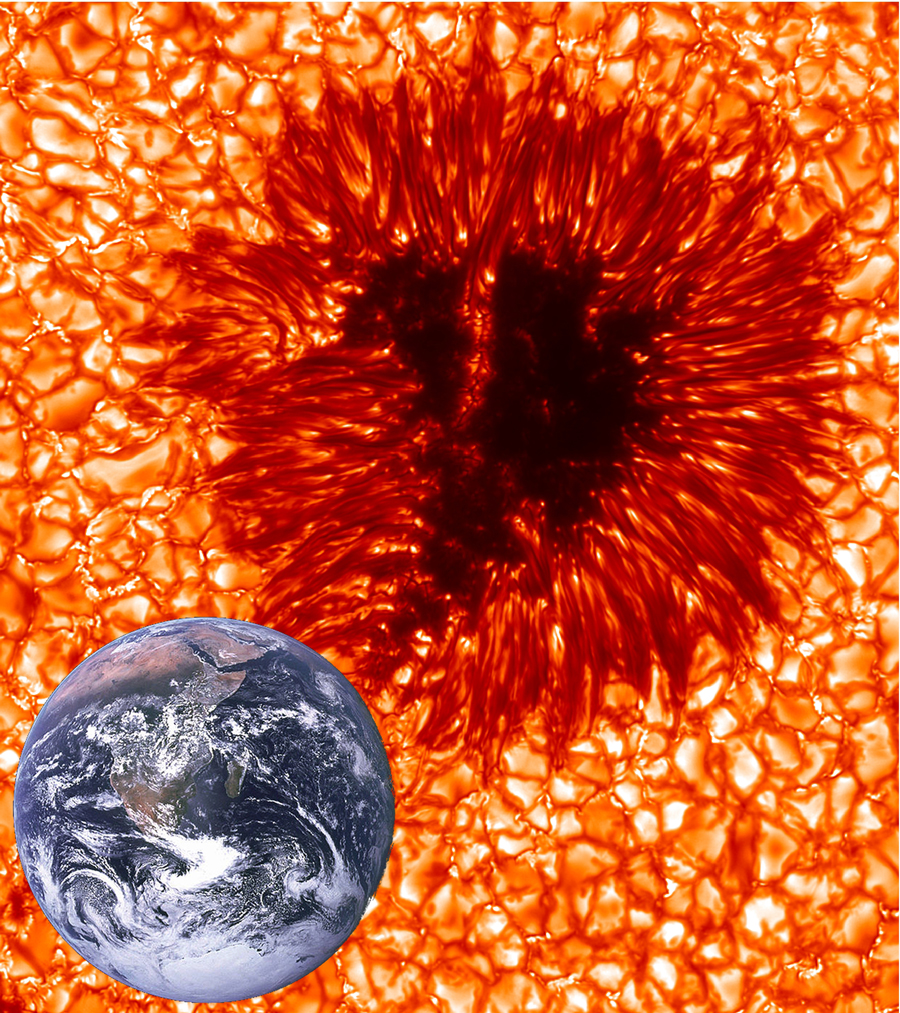
Astronomers will unveil a "major result" on Tuesday (June 14) regarding the sun's 11-year sunspot cycle.
The announcement will be made at a solar physics conference in New Mexico, according to an alert released today (June 10) by the American Astronomical Society. The discussion will begin at 1 p.m. EDT (1700 GMT).
Sunspots are blotches on the sun that appear dark because they are significantly cooler than the rest of the solar surface. While they look small from our vantage point on Earth, these enigmatic structures can be huge — up to 30,000 miles (48,280 kilometers) across, or as wide as the planet Neptune. Sunspots last for a few days or weeks before dissipating. [Photos: Sunspots on Earth's Star]
Sunspots are of interest to astronomers because they serve as an indicator of solar activity, which waxes and wanes in an 11-year cycle. In fact, scientists map out this cycle based on sunspot numbers.
Currently, the sun is in the midst of its Solar Cycle 24, the 24th cycle since observations began.
Recently, the sun has begun rousing itself from an extended quiescent period. Over the past several months, our star has unleashed several immensely powerful flares and sent huge volumes of solar plasma rocketing toward Earth, in massive eruptions known as coronal mass ejections (CMEs).
In the near future, the flares and CMEs should get more frequent and more intense. Researchers predict that solar activity will peak sometime in 2013 or 2014.
Get the Space.com Newsletter
Breaking space news, the latest updates on rocket launches, skywatching events and more!
Return to SPACE.com Tuesday for the results of the sunspot study announcement.
You can follow SPACE.com senior writer Mike Wall on Twitter: @michaeldwall. Follow SPACE.com for the latest in space science and exploration news on Twitter @Spacedotcomand on Facebook.
Join our Space Forums to keep talking space on the latest missions, night sky and more! And if you have a news tip, correction or comment, let us know at: community@space.com.

Michael Wall is a Senior Space Writer with Space.com and joined the team in 2010. He primarily covers exoplanets, spaceflight and military space, but has been known to dabble in the space art beat. His book about the search for alien life, "Out There," was published on Nov. 13, 2018. Before becoming a science writer, Michael worked as a herpetologist and wildlife biologist. He has a Ph.D. in evolutionary biology from the University of Sydney, Australia, a bachelor's degree from the University of Arizona, and a graduate certificate in science writing from the University of California, Santa Cruz. To find out what his latest project is, you can follow Michael on Twitter.










